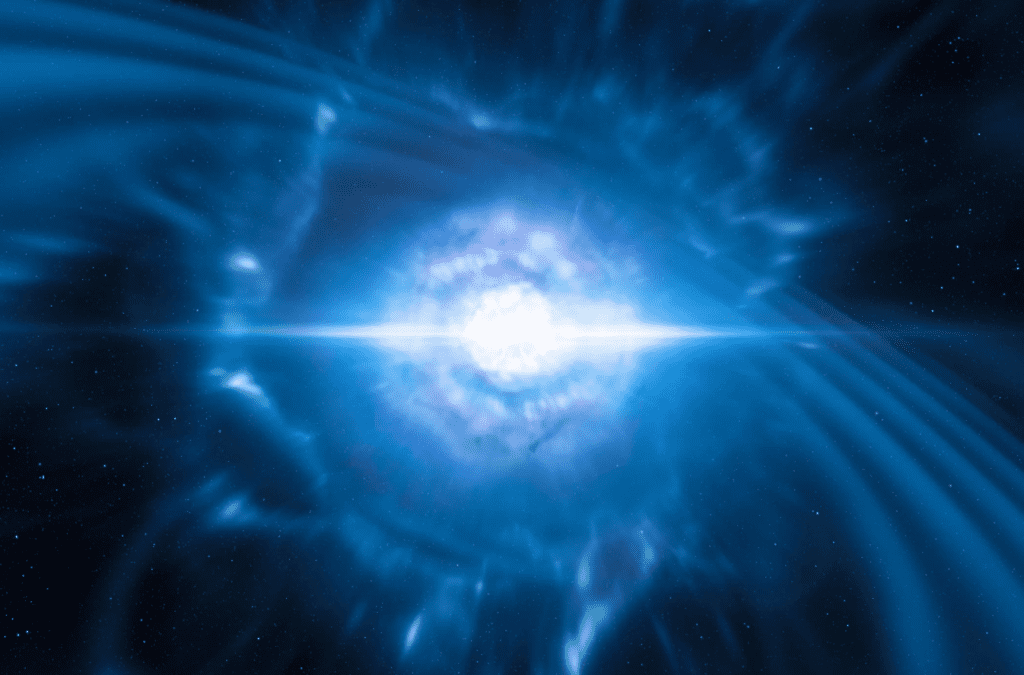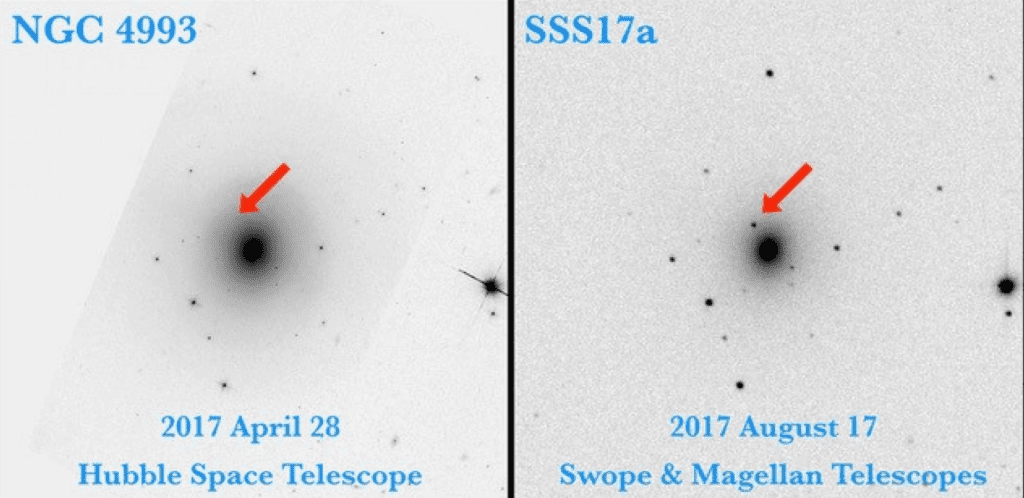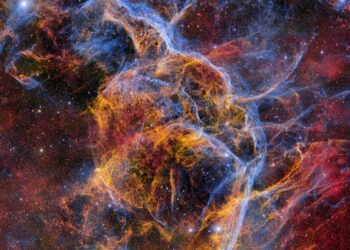
were detected on Aug. 17 in the galaxy NGC 4993m about 130 million light-years from Earth. Credit: NASA.
In a galaxy far, far away, some 130 million years ago, two neutron stars smashed into each other in an event called a ‘kilonova’ event, which astronomers have just witnessed for the first time. The collision sent out a burst of gamma rays and ripples through space-time known as gravitational waves. On August 17, both signals, which travel at the same speed of light, reached Earth, where they were picked up by the LIGO and Virgo detectors in the US and Italy, respectively. This was the first time signals originating from the same source were detected with both traditional telescopes that detect light, and gravitational wave detectors that sense wrinkles in the fabric of space-time.
A milestone in astronomy
The existence of gravitational waves, which were first predicted by Einstein’s Theory of General Relativity about a hundred years ago, was confirmed only last year. The event was recorded by the Laser Interferometer Gravitational-Wave Observatory (LIGO), whose founders were awarded this year’s Nobel Prize in Physics.
Gravity waves are essentially ripples in the fabric of spacetime that are generated by interactions between very massive accelerating cosmic objects, such as neutron stars or black holes. Physicists liken gravity waves to the waves generated when a stone is thrown into a pond.
LIGO was founded in 1992, so it took them 25 years to prove their existence. That’s because detecting a gravity wave is no easy feat. To spot gravitational waves directly for the first time, scientists had to measure a distance change 1,000 times smaller than the width of a proton using interferometers, which are essential mirrors placed 4 kilometers apart.
In the case of the September 14, 2015 observation which was announced on February 11, 2016, scientists observed gravitational waves produced by the collision of two black holes. This week’s announcement marks not one but a number of unprecedented observations in science. This was the first time astronomers witnessed a new type of nova called a kilonova, which is a large explosion following the merger of two neutron stars. A neutron star is the collapsed core of a large star — they’re the smallest and, at the same time, densest stars we know of. Kilonovas are 1,000 times brighter than a typical nova, which is already intense. Their existence was purely theoretical until this summer.
The biggest hype around this week’s announcement is that both light and gravitational waves were observed from the same source. At 8:41 a.m. Eastern time on August 17, a gravitational wave hit the Virgo detector in Italy and, 22 milliseconds later, set off the LIGO detector. Later, over several days, the source was detected from its light emissions at many different wavelengths, ranging from gamma-rays through to radio waves.

Within 24 hours of the initial readings, telescopes all over the world were directed towards the same patch of the sky. Astronomers eventually managed to find the source around a galaxy called NGC 4993, located 130 million light-years away. The event was named Swope Supernova Survey 2017a (SSS17a), after the telescope which first detected it.
At this point, it’s not clear what was left in the wake of the kilonova event. It could be that the two stars merged into a single neutron star or if the two bodies collapsed into a black hole, which can’t be detected directly.
This week’s discovery could revolutionize astronomy, since measuring both optical and gravitational signals from the same source could vastly improve how scientists measure the expansion of the universe. Edwin Hubble first realized in 1929 that the further away you look, the faster galaxies recede from us. By measuring the distance and velocity of a large number of stars, it’s possible to infer the age of the universe. Being able to sense gravitational waves and light from the same source at the same time will enable scientists to keep the error bar low for this estimate. As more and more gravitational waves are detected, scientists hope that within 10 years they’ll be able to determine the age of the universe from these sorts of signals alone, which they can then compare to traditional methods to spot inconsistencies.
All in all, this was an amazing week in science, with more than a dozen published papers about various aspects of SSS17a. We’ve likely only seen a glimpse of what gravity waves can teach us.






